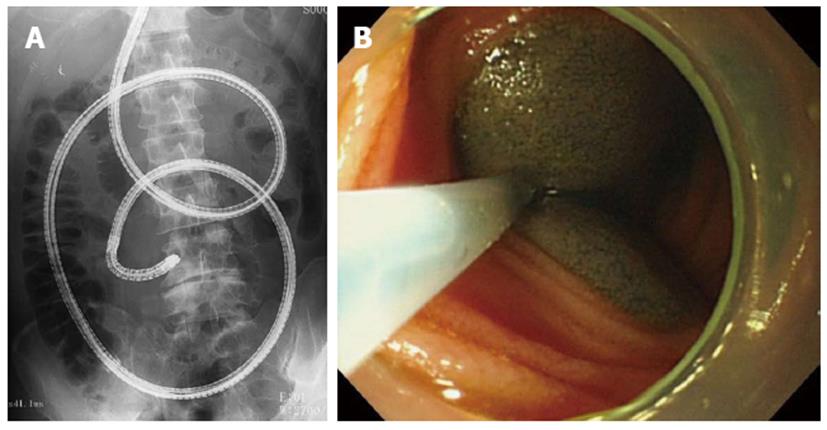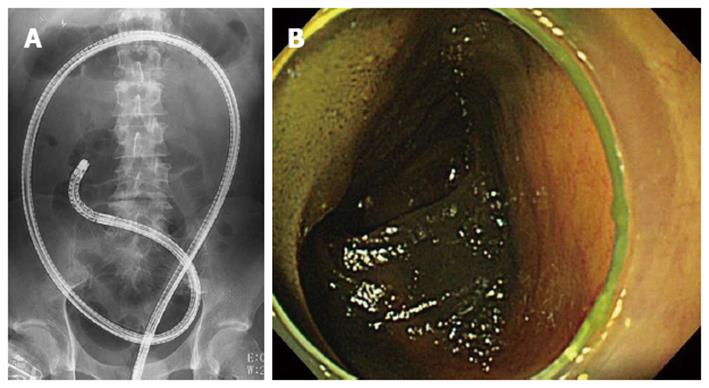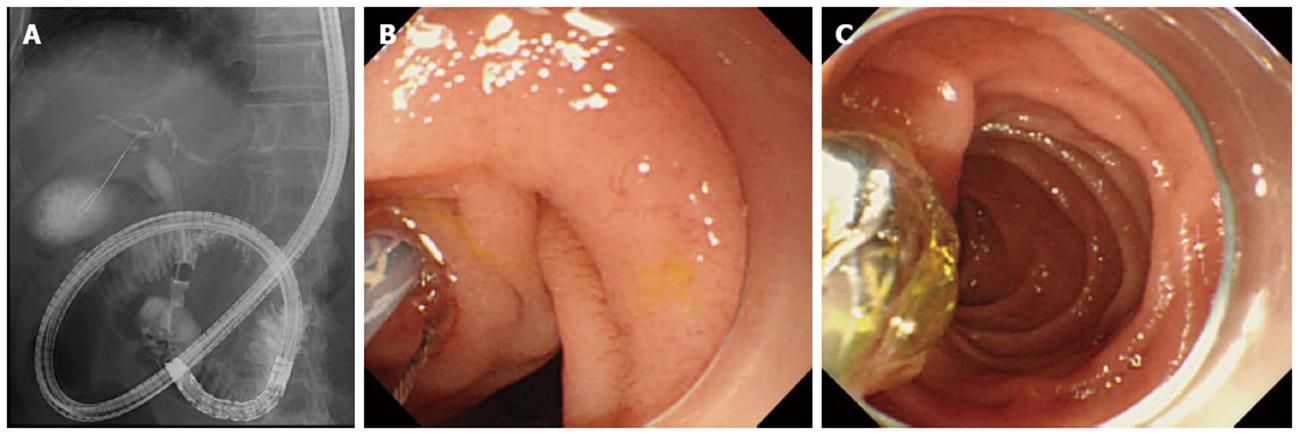Copyright
©The Author(s) 2015.
World J Gastrointest Endosc. Jan 16, 2015; 7(1): 59-65
Published online Jan 16, 2015. doi: 10.4253/wjge.v7.i1.59
Published online Jan 16, 2015. doi: 10.4253/wjge.v7.i1.59
Figure 1 Case of total enteroscopy.
A: Single-balloon enteroscope inserted orally; B: Indian ink was used as a tattoo in the deepest part of the intestine.
Figure 2 Case of total enteroscopy (continued).
A: Single-balloon enteroscope inserted anally; B: Tattoo marked when enteroscope was inserted orally was confirmed.
Figure 3 Short-type prototype single-balloon enteroscope.
This scope has a working length of 1520 mm and an inner channel of 3.2 mm, which are compatible with those of many endoscopic accessories. SBE: Single-balloon enteroscopy.
Figure 4 Case of common bile duct stones treated using a short-type prototype single-balloon enteroscope.
Conventional endoscopic accessories such as retrieval balloon catheter (A), endoscopic sphincterotomy catheter (B), and endoscopic balloon dilation catheter (C), were used in this procedure.
- Citation: Kawamura T, Uno K, Tanaka K, Yasuda K. Current status of single-balloon enteroscopy: Insertability and clinical applications. World J Gastrointest Endosc 2015; 7(1): 59-65
- URL: https://www.wjgnet.com/1948-5190/full/v7/i1/59.htm
- DOI: https://dx.doi.org/10.4253/wjge.v7.i1.59












